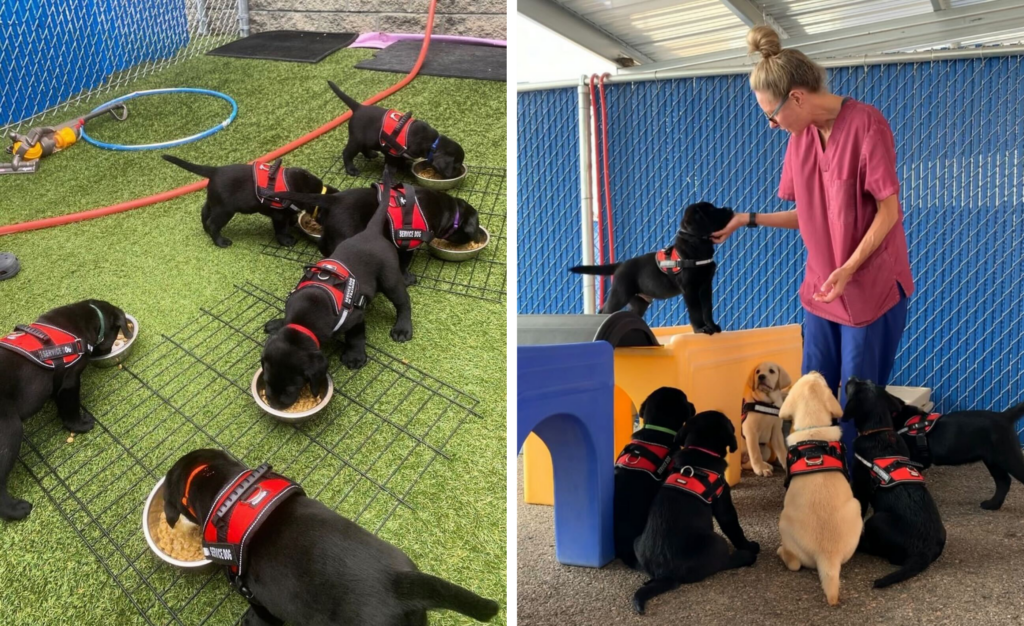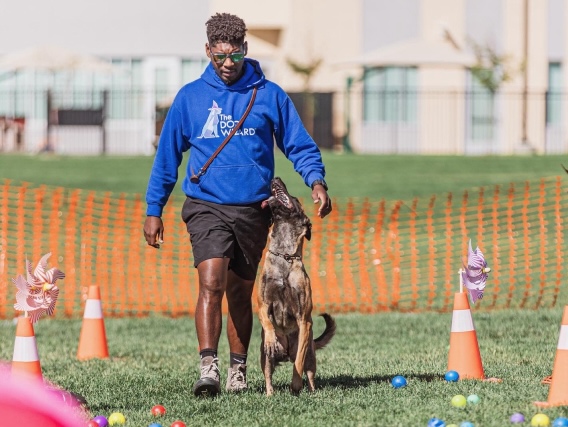Get Results with Puppy Training That Sets the Foundation for a Well-Behaved Dog
Get Results with Puppy Training That Sets the Foundation for a Well-Behaved Dog
Blog Article
Transform Your Canine's Habits With Proven Training Techniques
Transforming your pet dog's actions calls for a nuanced understanding of their specific traits and needs, as well as the application of tested training techniques. By utilizing favorable support and recognizing crucial add their body language, you can efficiently deal with common behavioral issues such as excessive jumping or barking. Consistency in your training approach not just boosts obedience yet also fosters a much deeper bond of trust fund and regard between you and your animal. Nevertheless, the path to effective change may provide unexpected obstacles that warrant more exploration.

Understanding Dog Actions
Comprehending pet behavior is crucial for effective training and communication between human beings and their canine friends. Canines, as social pets, show a range of behaviors affected by genetics, atmosphere, and experiences. Identifying these behaviors helps owners tailor their training approaches to fulfill the details demands of their dogs.
Key aspects of pet dog behavior include body movement, vocalizations, and social interactions. For circumstances, a wagging tail typically shows exhilaration, while a lowered head may signal submission or concern. Recognizing these signals can help proprietors translate their dog's psychological state and react appropriately. Furthermore, socialization plays a vital role in shaping habits; pet dogs that connect favorably with numerous individuals and various other pets are generally more versatile and well-adjusted.
In addition, identifying anxiety signals-- such as pacing, panting, or evasion actions-- can avoid escalation right into more serious concerns. Owners that are attuned to their dog's actions can create a risk-free and nurturing setting, fostering trust and boosting the training process. Inevitably, a deep understanding of canine habits lays the structure for an unified relationship and reliable training outcomes, ensuring both pet dogs and their owners thrive together.
Positive Support Methods
Favorable reinforcement methods are widely identified as one of the most reliable methods for training pet dogs, fostering a positive learning atmosphere. This strategy includes fulfilling desired habits with treats, appreciation, or play, thereby motivating the pet to repeat those actions (Dog training). Unlike revengeful methods, favorable reinforcement builds count on and reinforces the bond in between the pet dog and the trainer
To execute favorable reinforcement efficiently, timing is crucial. Rewards must be given instantly complying with the wanted actions to assist the pet dog make the connection. Consistency is likewise crucial; making use of the same commands and rewards helps the pet dog recognize what is anticipated. In addition, differing the incentives can maintain the pet dog involved. Rotating in between deals with, toys, and spoken appreciation can keep passion and inspiration.
It is very important to keep in mind that favorable support is not regarding bribery; rather, it has to do with reinforcing etiquette. Gradually, as the pet finds out to connect particular actions with favorable results, the frequency of rewards can be progressively lowered, transitioning to verbal praise or recurring benefits. This technique not only urges obedience however also advertises a pleased and positive dog, making training an extra satisfying experience for both parties entailed.
Dealing With Usual Problems
Addressing typical issues during canine training is essential for making certain a successful and unified connection in between the canine and its proprietor. Numerous pet owners experience behavior challenges, such as too much barking, jumping, and leash drawing. Comprehending the root causes of these habits is crucial for reliable training.
To minimize this, provide sufficient physical workout, psychological excitement, and possibilities for social interaction with both human beings and other pets. Educating the dog to sit upon welcoming can redirect this behavior positively.
Leash drawing is one more widespread issue, frequently resulting from a pet dog's eagerness to discover. Using proper chain handling methods, integrated with training methods that encourage loose-leash walking, can significantly boost this behavior.
In addition, problems like source visite site protecting or separation stress and anxiety require customized approaches. Progressive desensitization and counter-conditioning can be reliable in dealing with these challenges. By identifying and proactively taking care of these common issues, pet dog proprietors can cultivate a much more pleasurable training experience and strengthen the bond with their canine buddies.
Consistency in Training
Uniformity is a cornerstone of reliable dog training, as it establishes a clear framework for the canine to understand assumptions and habits. When commands, incentives, and signs are applied evenly, pet dogs can extra conveniently grasp what is called for of them. Irregular training can lead to complication, resulting in unwanted habits that discourage both the fitness instructor and the dog.
To achieve uniformity, it is essential that all members of the household stick to the same training approaches. Using the same spoken signs and hand signals makes sure that the canine obtains consistent messages. Additionally, the timing of adjustments and incentives ought to correspond; prompt support increases the chance that the dog will certainly connect the actions with the outcome.
Additionally, developing a regimen can better boost consistency. Regular practice, paired with organized schedules for feeding, walking, and playtime, aid dogs anticipate and comprehend their atmosphere, making them a lot more responsive to training. Inevitably, uniformity cultivates a feeling of safety and trust fund, encouraging pets for more information efficiently. By dedicating to a structured approach, trainers can promote positive actions adjustments and grow a genteel buddy.
Structure a Solid Bond
How can fostering a strong bond between a pet dog and its proprietor improve the training experience? When a pet really feels protected in its link with its owner, it is extra likely to display favorable habits and be responsive to discovering.

Furthermore, a well-established connection can decrease stress and anxiety and behavior problems, my link as pet dogs are less likely to act out when they feel recognized and looked after. Prioritizing the development of a solid bond not only enhances the training experience however likewise contributes to a better and a lot more well-adjusted pet dog. Ultimately, the trip of training changes right into a collaborative collaboration, leading to lasting behavioral enhancements.
Conclusion

Proprietors who are attuned to their canine's actions can create a caring and secure setting, fostering count on and improving the training procedure. Inevitably, a deep understanding of canine behavior lays the foundation for a harmonious connection and efficient training end results, ensuring both canines and their owners flourish with each other.
Resolving usual issues during dog training is vital for making certain a harmonious and successful connection between the canine and its owner (Dog training).Consistency is a foundation of browse around this site reliable pet dog training, as it develops a clear framework for the pet dog to comprehend behaviors and assumptions.In verdict, changing a pet dog's habits with shown training methods calls for an understanding of canine actions, the application of favorable support methods, and a focus on consistency
Report this page